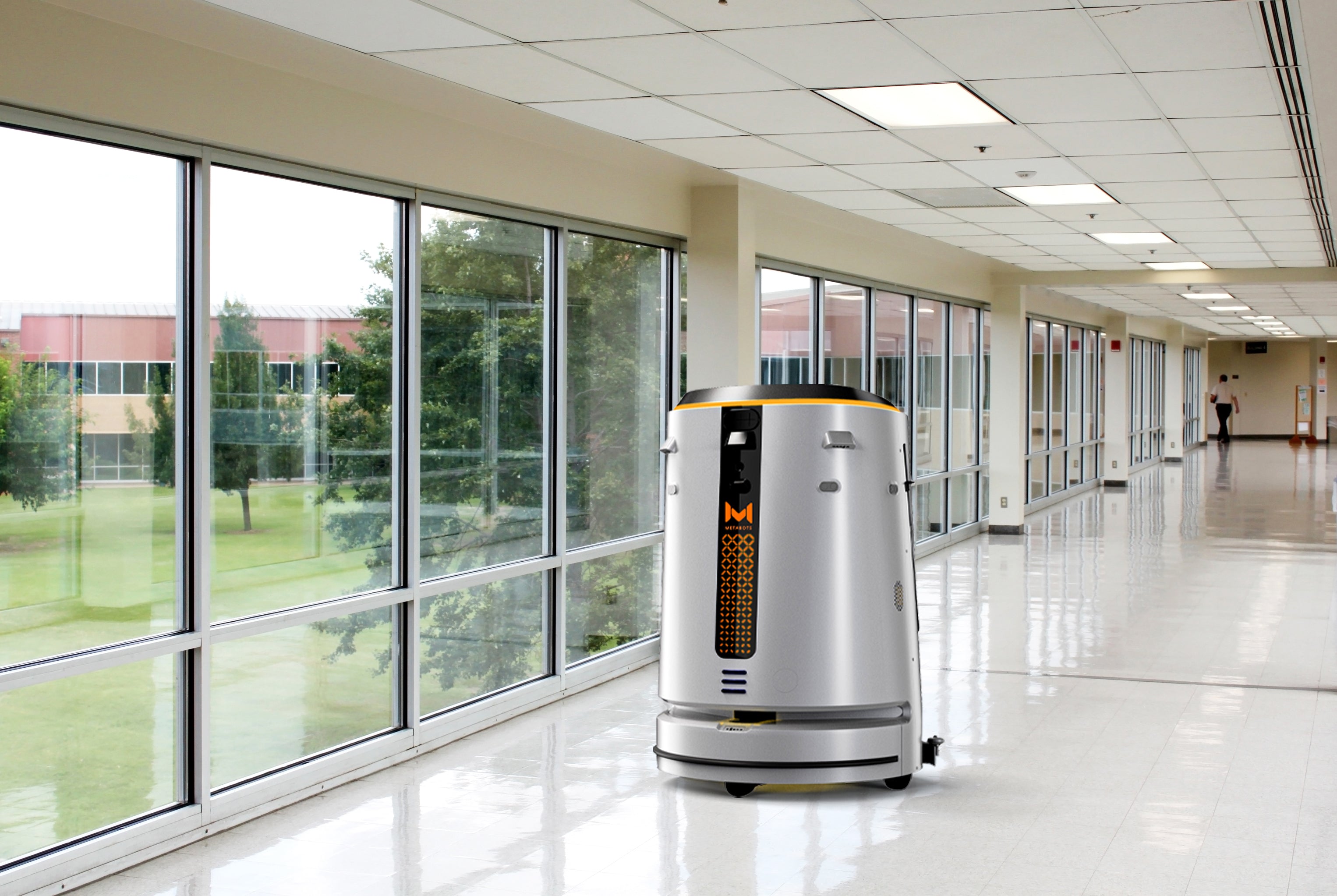Technology usage in education has seen remarkable growth in recent years, accelerated by the Covid-19 pandemic and the rise of AI tools. Universities in particular have embraced innovation, with Universities UK reporting that the post-pandemic shift has had a number of benefits, from narrowing attainment gaps to improving assessment methods and upskilling staff and students[1].
"The case is growing around how cobotics can deliver measurable value, even in complex education facilities such as university campuses."
Robotics is one particularly exciting area of innovation that holds huge potential for automating more than learning tools. In the US, a number of campuses now have robot food deliveries and security bots[2]. In the UK, over 200 university courses are available to study robotics, automation, and AI[3]; the higher education sector clearly recognises the potential of these transformative technologies.
One area that has received far less attention, but is being explored with fascinating results, is how automation can improve cleaning operations in educational facilities. With a need to create cleaner, safer, and more efficient environments, especially against a challenging backdrop of stretched resources, innovative cleaning technologies can provide much-needed support. This is particularly true of cobotics; robots that are designed to work in close collaboration with humans.
Gavin Holmes, New Product Development Manager at Robert Scott, explains how a recent trial has provided valuable insights into how effective a cobotic scrubber/dryer can be in an educational setting.

A data-driven approach to cleaning in education
Although the education sector has traditionally and understandably prioritised teaching and learning when it comes to investment in innovation, the incorporation of new technologies has paved the way for exploring new opportunities in areas such as facilities management and cleaning.
One of the main barriers to adoption in the past has been the perceived cost and uncertainties around ROI. This is particularly important in education, where settings are operating on limited budgets and need to carefully weigh up every investment – particularly ones that don’t directly target educational goals. However, with more real-world trial data now available, the case is growing around how cobotics can deliver measurable value, even in complex education facilities such as university campuses.
One recent trial in an educational setting featured the MS60, an advanced scrubber dryer robot that autonomously and effectively handles the time-consuming task of routine floorcare, allowing caretaking teams to spend their time on higher-value tasks, such as spot cleaning.
"In the UK, over 200 university courses are available to study robotics, automation, and AI."
In one test, the robot cleaned a 554m² sports hall in just over 33 minutes, with a 96% successful execution rate. By comparison, a human using a standard 36cm scrubber would take nearly three times as long, putting the facilities out of action for longer and adding strain on the cleaning team.
In high-traffic areas, including hallways with numerous turns and sub-corridors, the MS60 maintained a cleaning rate of 440m² per hour and a 97% success rate, highlighting its capability in navigating tight and irregular spaces.
In universities where facilities teams need to maintain high standards of cleanliness while ensuring minimal disruption to learning, with limited time and resources, these results could make a significant impact.

Smarter, cost-saving cleaning options for universities
The MS60 features optimal water dosing, a high-quality natural rubber squeegee, and a powerful suction motor, providing incredibly quick drying times and outstanding cleaning results. It also has dynamic obstacle avoidance, with 12 sensors that enable it to identify, detect and avoid obstacles as small as 5cm high, and a zero-degree turning circle. The robot’s charging station enables automatic wastewater disposal and water refilling. These features mean it can clean floors with minimal supervision and downtime, and it can be mapped and operated from either the onboard control panel or remotely from a laptop or tablet.
For facilities managers in educational settings, the high standards of cleanliness and efficiency are just the start of the benefits. Real-time performance data allows for cleaning schedules to be continuously optimised, and cleaning reports make it easier to assess reports without the need for inspection.
Importantly for budget-conscious universities, cobotic solutions like the MS60 can be more cost-effective than traditional cleaning approaches, without the need for high up-front costs. In fact, the data from the trials shows that leasing agreements can make it possible to make savings from day one. Even when purchased outright, the robot will typically have achieved payback within two years, after which the savings become even more significant.
As universities and other education providers continue to balance the benefits of new technology with the challenges of stretched budgets, cobotics could play a key role in supporting education by providing efficiency and safe, hygienic spaces.
To learn more or to arrange a site trial, please contact us.
[1] https://www.universitiesuk.ac.uk/sites/default/files/uploads/Reports/lessons-from-the-pandemic.pdf
[2] https://community.robotshop.com/blog/show/meet-the-robots-being-used-on-college-campuses
[3] [3] https://study-uk.britishcouncil.org/plan-studies/choosing-course/subjects/artificial-intelligence-robotics


Share:
Robotics revolutionise cleaning efficiency at W12 Shopping Centre
Robert Scott expands robotics range with world-first robotic sweeper and scrubber dryer